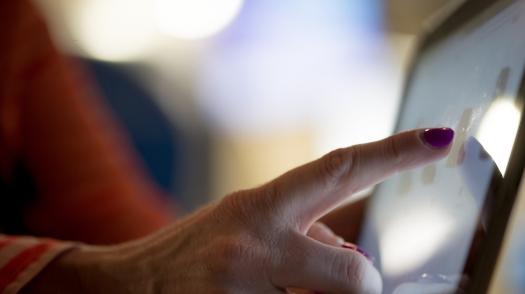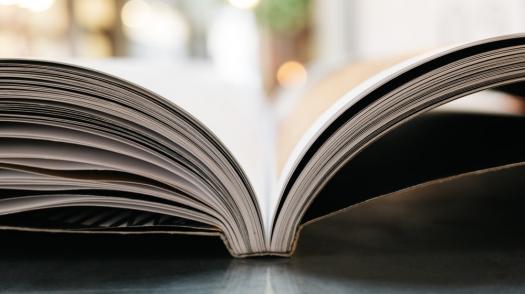This section offers an introduction to the way the brain operates, and how it might be affected by an injury.
The brain is the most complex, mysterious part of our body.1 Weighing about 3lbs, this relatively small organ is nothing less than the engine room of our behaviour and the way we see the world.
It makes up just two per cent of our weight, but looks after a massive 98 per cent of our functions.2 This miniature supercomputer not only gathers and processes information from all of our senses, it also sends out lots of information, telling our limbs to move and our eyes to blink.
Importantly, it also determines the way we behave, the things we say, and our complex thought processes.
When the brain is injured
Brain injury comes in many different forms. But there may be a relationship between someone’s behaviour after their injury and the part of the brain that’s been injured. The brain is like other parts of our body in some ways. It bruises and swells when injured just as a thumb or a toe might. But in some crucial ways it is very different.
The 100 billion nerve cells in our brain are all connected with other cells many times over, forming tiny working circuits that allow us to function. An injury has the effect of breaking these circuits. This means the cells around the injured part must take on some of the duties that had been carried out by the injured part.3
Like any of us when we have to do something extra on top of our existing workload, it can make everything slower and less efficient. One of the clinicians who we work with says it’s like the M25 when part of it is shut down. If part of the M25 is out of action, then the traffic would stop entirely at first. But slowly, drivers would head off in different directions and find new ways of getting back to the M25 and continuing along their route.
This is very much how the brain is sometimes able to respond to injury.4 The brain must find other routes – other ways of carrying out its functions – and this can take time.
The different parts of the brain and what they do
What follows is a whistle-stop tour of the brain, and the way different parts, or ‘regions’ influence our lives. These parts work together for complicated activity such as speech or movement. So if one part of the process is injured, the whole of the process is affected.
It’s almost like a premiership football team, in that if one key player has an injury, the whole team’s performance is affected. Some injuries and their effects will be more widespread and so will affect several parts of the brain. These are called ‘diffuse’ injuries.
The brain is divided into different areas, known as lobes.
The frontal lobes
The frontal lobes sit behind our forehead and are one of the biggest parts of the brain. The pre-frontal cortex, located here, looks after what are often called ‘executive functions’. As their name suggests, these are things like our judgement, decision-making, planning ahead, what we choose to focus our attention on, and the control of our behaviour and emotions.5, 6
This sophisticated part of the brain ‘overrides’ and keeps in check our more basic impulses and behaviours. It also plays a large role in speech and language, and in memory. And within the pre-frontal cortex is the motor cortex. This is involved in the control of our planned movements (as opposed to involuntary ones).5
When they are injured
This part of the brain is particularly prone to injury if there’s an impact to the head.7 This is because the impact doesn’t necessarily have to strike this part of the head for it to be affected.
There are bony ridges at the front of the skull, so if there’s a blow to any part of the head, the brain may move around and become damaged as it comes into contact with these ridges. In some cases, swelling might mean the brain comes into contact with these ridges.
Another reason this part of the brain is prone to difficulty is because it’s connected up to many other parts. If you look again at the important functions the frontal lobes are responsible for, you can get a good idea of how someone might be affected.
A child may have more trouble making decisions, solving problems, doing things in a correct sequence (for example, getting dressed, getting ready for a lesson) or generating ideas.8, 9 Behaviour can be affected. Some children show more impulsive behaviour – they may do things without ‘thinking them through’.10, 11 For other children, the effect on their behaviour may seem the opposite. They may feel a loss of motivation or ‘drive’.12
Speech, language and memory 13, 14 are also affected. Read our separate sections on Behaviour, Speech and language and Memory
The parietal lobes
Found just behind the frontal lobes, the parietal lobes are the processing centre for a lot of the information that comes in from around the body. They help us with our perception and the way we make sense of the world. They contain the ‘primary sensory cortex’, which controls sensations, like touch, pain and whether something is hot or cold.
When they are injured
When this part of the co-ordination system is injured, someone’s ability to locate parts of their body and their ability to know where they are in relation to everything around them is affected.
This part of the brain is also involved in the way we understand language, and so this can be affected if the parietal lobes are injured.15
Occipital lobe
The occipital lobe is where we process all the visual information that’s pouring in. It helps us to perceive different shapes and colours, faces and objects.
When it’s injured
Injury to this part of the brain can affect the way someone perceives size, shape and colour.16
The cerebellum
Located at the very back of the brain, the cerebellum looks after our balance, movement and co-ordination. The cerebellum helps us with co-ordination and where we are in relation to everything else. It tells us which way is up and stops us from colliding into things as we make our way around. It looks after complex planning of movement.
When it’s injured
It can make children unsteady on their feet and less able to co-ordinate themselves when walking. They can have difficulties with their balance.17 You might hear this described as an “unsteady gait”. An injury to this part of the brain can make all movement less co-ordinated. This can include speech, fine movements and eating. One of the effects might be dyspraxia. 18
Someone’s ability to locate parts of their body and their ability to know where they are in relation to everything around them is affected.
The brainstem
The brainstem looks after what are often called our ‘involuntary functions’. These are things we do that are crucial for keeping us alive, but they’re things we do without thinking about it.
It regulates our heart rate, our breathing, our blood pressure and our swallowing, all on ‘autopilot’ without a conscious thought from us. It keeps us alert, but it also keeps us calm. It also regulates our hormones.
When it’s injured
For some children, these ‘involuntary functions’ may no longer be on autopilot. In some cases, swallowing is no longer a reflex, and eating becomes difficult (and even impossible).19
In other cases, heart rate and breathing may not be as well regulated, which can cause difficulties. This part of the brain is important when we’re talking about disorders of consciousness.
The temporal lobes
The temporal lobes are at the side of the brain at about the level of the ears. They process the sound that comes in from the ears, so we can understand and produce speech, and listen to music. The temporal lobes are also part of the wider system that looks after our memory.
When they are injured
Children might experience problems with language and communication. 20
Introduction to the Brain fact sheet
You can download and print off this Introduction to the Brain fact sheet to learn more or give to your child’s teacher to help them understand the effects of brain injury.



